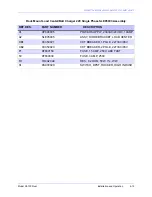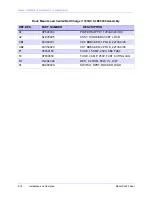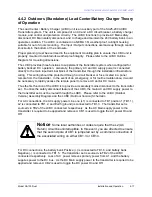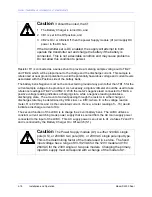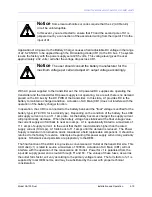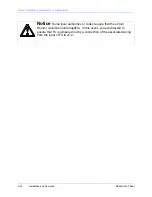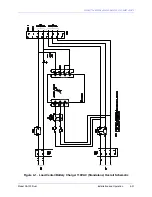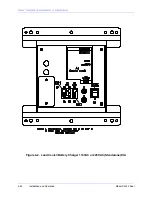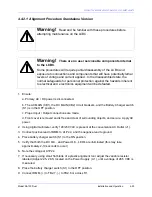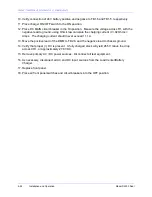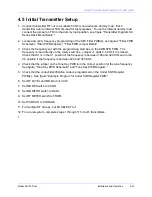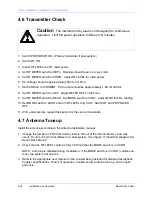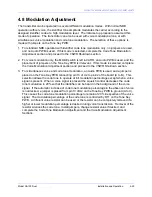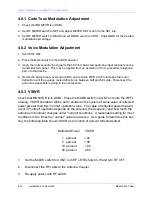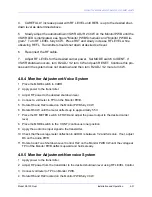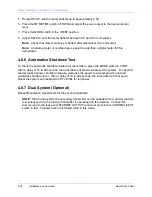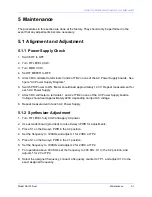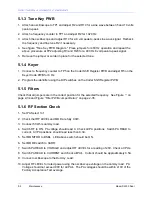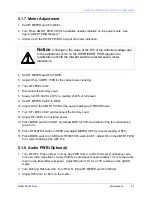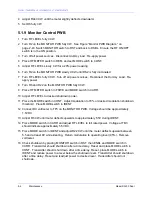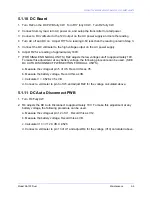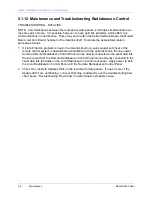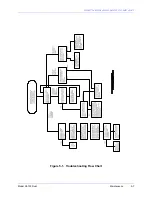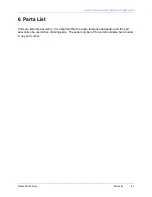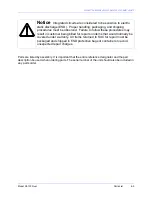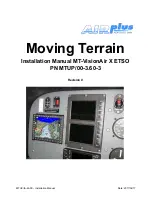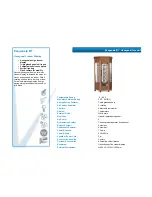
SOUTHERN AVIONICS COMPANY
Model SA100 Dual
4-29
Installation and Operation
4.8 Modulation Adjustment
The transmitter can be operated in several different modulation modes. With normal NDB
operation without voice, the identifier tone amplitude modulates the carrier according to the
assigned identifier code at a high modulation level. The initial set up procedure assumed this
mode of operation. The transmitter can also be used with voice modulation alone, or with
simultaneous voice modulation and code tone modulation. The selection of these options is
made with jumpers on the Tone Key PWB.
1. For standard NDB operation with identifier code tone modulation only, no jumpers are used,
and no Audio PWB is used. If this mode is selected, complete the Code Tone Modulation
Adjustment section and proceed to the VSWR Shutdown section.
2. For voice modulation only, the MODE switch is left in CARR, an Audio PWB is used, and the
placement of jumpers on the Tone Key PWB is irrelevant. If this mode is selected, complete
the Voice Modulation Adjustment section and proceed to the VSWR Shutdown section.
3. For simultaneous voice and code tone modulation, an Audio PWB is used, and a jumper is
placed on the Tone Key PWB connecting pin 13 of U2 to pin 22 of the board (A to B). This
selection allows the code tone to operate at full modulation percentage except when a voice
signal is present. When a voice signal is present the squelch control decreases the code
tone modulation to 20% so that the identifier can be heard in the background of the voice
signal. If the automatic increase of code tone modulation percentage in the absence of voice
is not desired, a jumper is placed from pin 13 of U2 on the Tone Key PWB to ground (A to C).
This causes the code tone modulation percentage to remain at 20% irrespective of the voice
signal. The modulation percentage of the code tone is controlled by R11 on the Tone Key
PWB. A different value resistor can be used or the resistor can be completely removed if a
higher or lower modulation percentage is desired during voice transmission. Removal of the
resistor silences the code tone. Install jumpers, change resistor value if desired, and
complete the Code Tone Modulation Adjustment and the Voice Modulation Adjustment
Sections.
Summary of Contents for SA100
Page 20: ...SOUTHERN AVIONICS COMPANY Model SA100 Dual x Contents...
Page 22: ...SOUTHERN AVIONICS COMPANY Model SA100 Dual 1 2 Introduction This page intentionally left blank...
Page 25: ...SOUTHERN AVIONICS COMPANY Model SA100 Dual 1 5 Introduction Figure 1 2 Transmitter Portrait...
Page 26: ...SOUTHERN AVIONICS COMPANY Model SA100 Dual 1 6 Introduction This page intentionally left blank...
Page 28: ...SOUTHERN AVIONICS COMPANY Model SA100 Dual 1 8 Introduction This page intentionally left blank...
Page 119: ...SOUTHERN AVIONICS COMPANY Model SA100 Dual 3 3 Antennas Figure 3 1 Antenna Reactance...
Page 120: ...SOUTHERN AVIONICS COMPANY Model SA100 Dual 3 4 Antennas This page intentionally left blank...
Page 160: ...SOUTHERN AVIONICS COMPANY Model SA100 Dual 5 8 Maintenance This page intentionally left blank...
Page 162: ...SOUTHERN AVIONICS COMPANY Model SA100 Dual 6 2 Parts List This page intentionally left blank...
Page 164: ...SOUTHERN AVIONICS COMPANY Model SA100 Dual 6 4 Parts List This page intentionally left blank...
Page 218: ...SOUTHERN AVIONICS COMPANY Model SA100 Dual 6 58 Parts List This page intentionally left blank...

